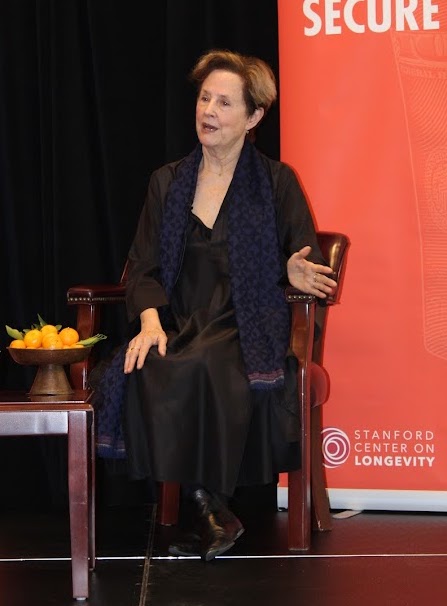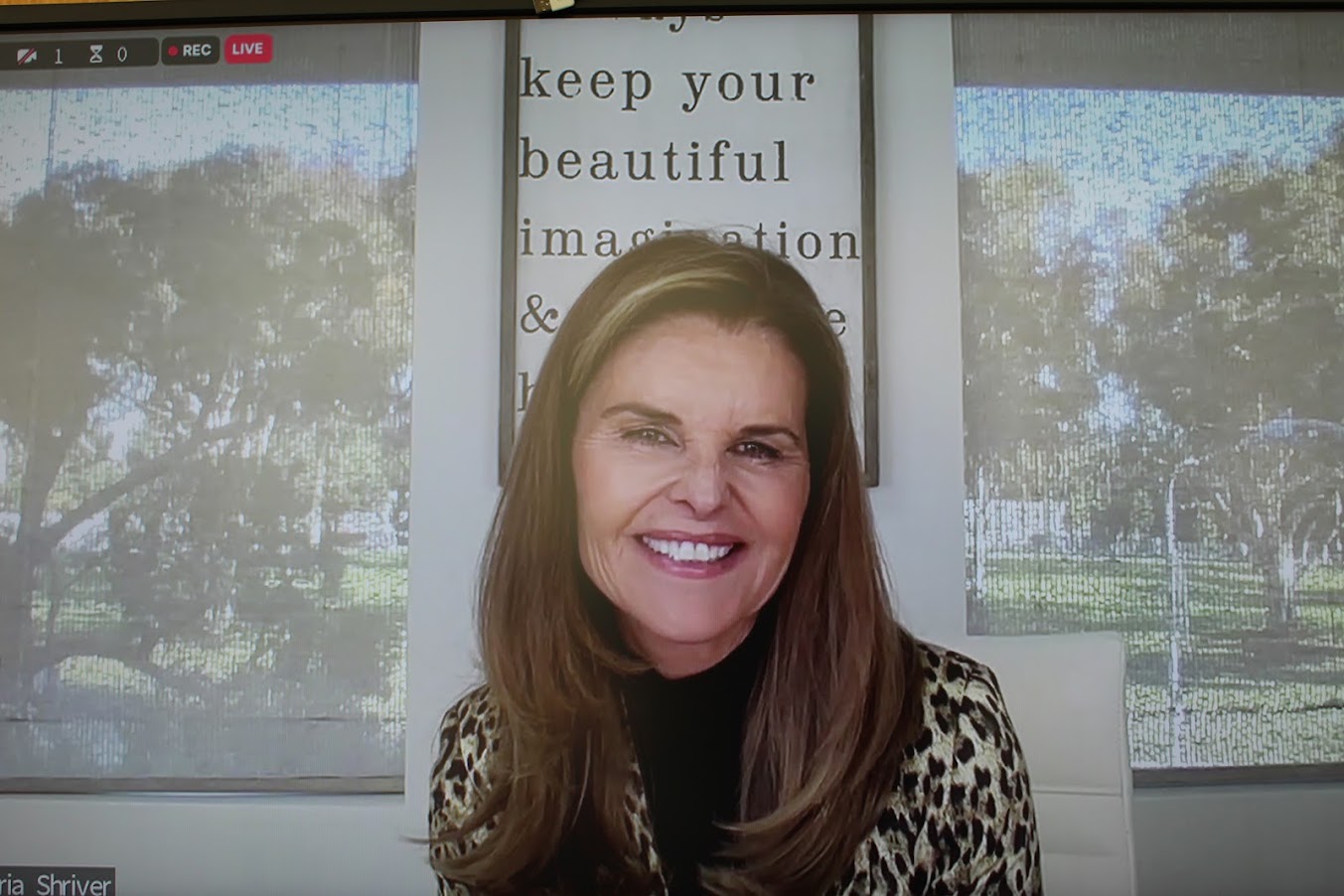
2022 Century Summit
December 13-14, 2022
We enter 2023 buoyed by the tremendous success of our third annual Century Summit. The synergy from having so many smart, creative, and innovative people in one room (both in-person and virtual), stimulated new thinking and cross-fertilization that will generate many new ideas for innovative research and projects. Sponsored by the Stanford Center on Longevity and the Longevity Project, the conference was a hybrid event held Dec. 13 and 14, with an in-person audience at Stanford and a virtual audience around the world. (Recordings can be watched here.)
We engaged with tough questions surrounding the quest for longer and healthier lives, framed against a backdrop that highlighted SCL’s three key guideposts – to help people arrive at old age mentally sharp, physically fit, and financially secure.
Many of the first day’s speakers focused on what it will take to make our lives not only longer in years, but healthier throughout. Several sessions focused on how early childhood experiences and social contexts can have a life-long impact on physical and mental health.
Almost every panel stressed the importance of social connections and intergenerational relationships. Many also focused on the importance of early interventions to prevent later health issues. There was concern around how food and housing insecurity at all ages can have an impact on overall well-being. Panelists also expressed a sense of optimism throughout as they outline numerous techniques, opportunities and programs that are beginning to make a difference in how we embrace longevity.

Dr. Diana Ramos (left) and Dr. Louise Aronson
California Surgeon General Diana Ramos and Stanford geriatrician Louise Aronson discussed how physical and mental health begins in utero. Ramos highlighted an initiative her office is leading to educate and train health care providers about the significance of Adverse Childhood Experiences, or ACES, in altering a child’s lifetime mental and physical health.
Ramos also underscored the importance of California’s new Master Plan for Aging, which outlines five bold goals and twenty-three strategies to build a California for All Ages by 2030. California is transforming policy ideals into action on the ground through public-private partnerships, she said, adding that different communities will require different solutions to the various challenges created by an aging population.

Alice Waters
Path-breaking chef and food activist Alice Waters, who has been active in public education about how Americans grow food, spoke about the intergenerational connection established by bringing older people into schools to help with edible gardens, and bringing edible gardens into nursing homes. Her next big idea: an effort to persuade the University of California to lead the way in developing a market for regenerative, organic food, food that would be more healthful and also better for the climate, as it “pulls the carbon down into the ground where it belongs.”
In a session on brain health, three brain researched described their efforts to facilitate cognitive health throughout life. Adam Gazzaley, Founder and Director of Neuroscape at UCSF, described four things that tend to decline with aging: attention, ability to resist distraction, how we manage stress, and how we might even feel joy and empathy with others. He said his interest is in finding non-invasive approaches to enhance brain plasticity, an approach he dubbed “experiential medicine.”

Dr. Adam Gazzaley
He discussed the video game EndeavoRX, an FDA-authorized treatment for children with ADHD, and said his lab, Neuroscape, is interested in taking closed-loop video games to the next level, to help improve cognition in a variety of populations.
Other speakers discussed how health care costs are structured, and how technology is being used to monitor some aspects of health, such as glucose monitoring devices and fitness trackers.
Threaded throughout these discussions was a refrain about the importance of including equity of access into any new approaches and solutions being envisioned. Even the benefits of such basic innovations as telehealth appointments may be unequally distributed when you consider that older people and lower-income people tend to have less reliable internet access, panelists noted.
Day two of the summit focused more on the middle years of life – and on the importance of building a more age-cohesive society. Panelists discussed the future of work, the fact that it’s not possible to finance a 30-year retirement on a 40-year career, and that people will have to work longer to finance their lives and to provide social connection and engagement. But at the same time, panelists acknowledged, such opportunities are not available to everyone because of physical limitations, age discrimination, and the short-sighted policies of many human resource departments.
One of the key questions, said SCL Associate Director Martha Deevy, is how we can provide equitable access to good jobs that provide healthy careers, work-life balance and financial security.
Beth Cobert, acting president of the Markle Foundation, and Jane Oates, president of Working Nation, emphasized that a transformation is happening in the workforce and a key component is the acquisition of digital skills, which are critical at every age level. For the average occupation, 37% of the skills you need for that occupation have changed, Cobert said. “One of the things that’s a constant in the future of work is that we’re all going to have to learn new things,” she said. “We’re going to need to do that again and again and again.”

From Left: Ramsey Alwin, Jane Oates and Beth Colbert
Moreover, both said, companies and HR departments need to re-orient their recruiting to focus less on college degrees and more on workplace skills that are transferrable to a variety of jobs. There’s a strong business interest for the private sector to invest in their workforce, and the government also has a role, they said. Employers should be incentivized to provide training for their workers, and the federal government needs to step up by increasing tax benefits for employee development. Cobert pointed to an Indiana program called Next Level Jobs as a good model for a government-run program that provides free training for high demand jobs.
All of the panelists acknowledged the challenges of jobs that involve real physical labor, and they emphasized the need to re-frame the skills acquired in such jobs so that they can be transferred to more sedentary positions later in life. A truck driver, for example, has been trained to operate complex machinery, and a plumber could become an instructor. They also underscored that gig workers need greater protections, such as paid family leave.
Developing that theme, a panel on funding a longer life discussed the importance of creating opportunities for ongoing learning for a generation whose work life won’t be sustained by their early education alone. And they also discussed the need for financial education and for various policy mechanisms to help young people save for a retirement that seems quite distant.
In a different panel, higher education experts observed that in the 20th century, California led the way in human capital development with its Master Plan for Higher Education. Now, said moderator Mitchell Stevens, a Stanford education professor and Center on Longevity co-director with a specialty in educational sequences and lifelong learning, the rapidly evolving demands of the 21st century call for a new approach, one that embraces and provides opportunities for lifelong learning.
Gagan Biyani, CEO of Maven, an online learning platform, argued that college has been failing for ten to fifteen years. He predicted that soon people of may forego higher education altogether and move directly into the workforce, relying on a more customized approach to education. Eloy Ortiz Oakley, CEO of the College Futures Foundation, agreed that although there is still pent-up demand for elite institutions like Stanford and the University of California, enrollment is declining at liberal arts colleges, regional universities, and community colleges across America. He anticipates a shaking out that will lead to a more flexible learning environment focused on more skills-based learning.

Maria Shriver
Journalist and former California First Lady Maria Shriver, fresh off an October summit she hosted called Radically Reframing Aging, spoke passionately about the need to rewrite the script about aging to include reinvention at every level: personal, professional, political – and also spiritual. Outdated stereotypes ignore the fact that many people are at their professional peak in their 70s, 80s, and even 90s, she said, adding that some huge things that make a difference are health and financial security, as well as intergenerational friendships and a broad and inclusive notion of what it means to be a family.
Susan Golden, director of dciX at Stanford Distinguished Careers Institute, moderated a panel about how American companies can gear up for 60-year careers, and pointed out that age-ism is the last acceptable form of discrimination. Jean Accius, Senior Vice President of Global Thought Leadership, AARP, said that while 80% of companies surveyed recently said they valued a multi-generational workforce, more than half did not include age in their DEI policies. Throughout the discussion, panelists emphasized the need for flexible work schedules, for sabbaticals, and for valuing the skills and experience of older workers.
There is reason for optimism. Carol Fishman-Cohen, CEO and co-founder, iRelaunch Normalizing Career Breaks, said that when she launched her organization a career break on an applicant’s resume usually meant the resume was tossed out. Now, career breaks have become so normalized that LinkedIn recently added a category for career break in their profile-building software. The next step will be to create an applicant category for mid-career reentry programs.

From left: Martha Deevy, Sherreta Harrison and Raymond Jetson
Building on that discussion, another panel discussed the value of intergenerational leadership, the intentional pairing of people from different generations in leadership positions in a way that leverages the wisdom and experience of both generations. They offered examples of such pairings, which Sherreta R. Harrison, Sustainability Catalyst & IG Co-Lead, MetroMorphosis, said allow younger people to grow into leadership and allow older people not to feel hurried out.
By the end of the two-day summit, SCL Director Laura Carstensen was brimming with enthusiasm about the extensive and varied projects and research described by panelists. “I think we’ve reached a tipping point,” she said. “Ten years ago people were not talking in the way that they’re talking now. Now we’re talking about being excited about what can be done, and I think ten years ago we were talking about, oh my gosh how are we going to deal with this?”
A decade ago, when SCL convened a conference with national leaders of HR to talk about aging workforces, “we thought we were going to talk about how you make use of these mixed-age workforces, but within ten minutes they wanted to talk about graceful exits. ‘How do you get rid of those old folks?’”
“Things are changing, and they’re changing because of the people in this room,” Carstensen said. “I’m grateful to all of you.”
For videos, a list of panels and panelists and more, visit the Summit website.
Sign up for SCL’s Longevity Briefing newsletter here.

